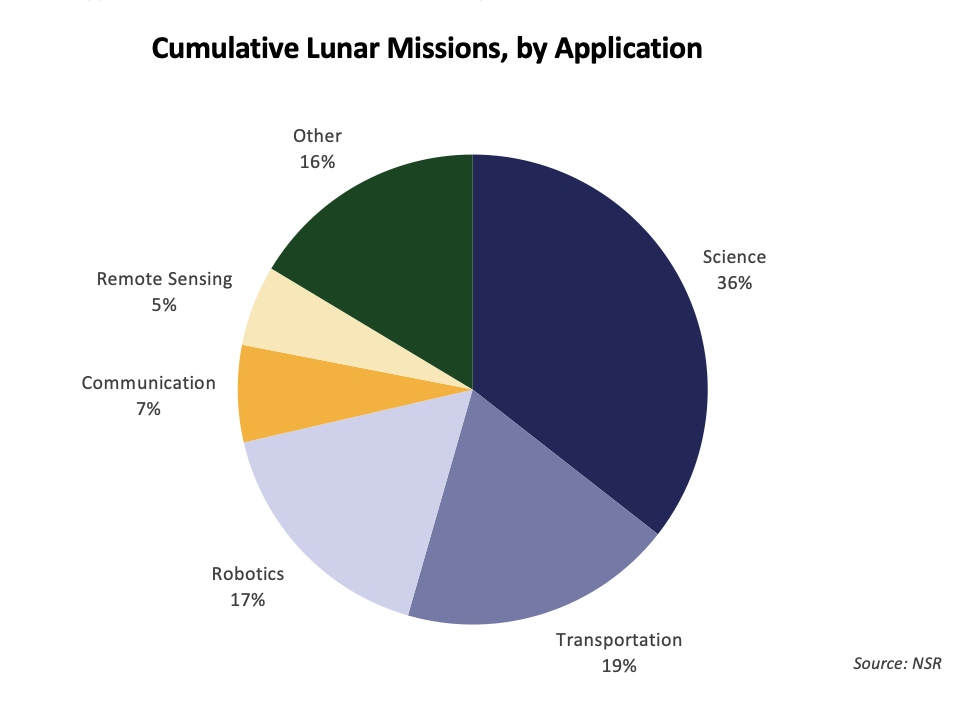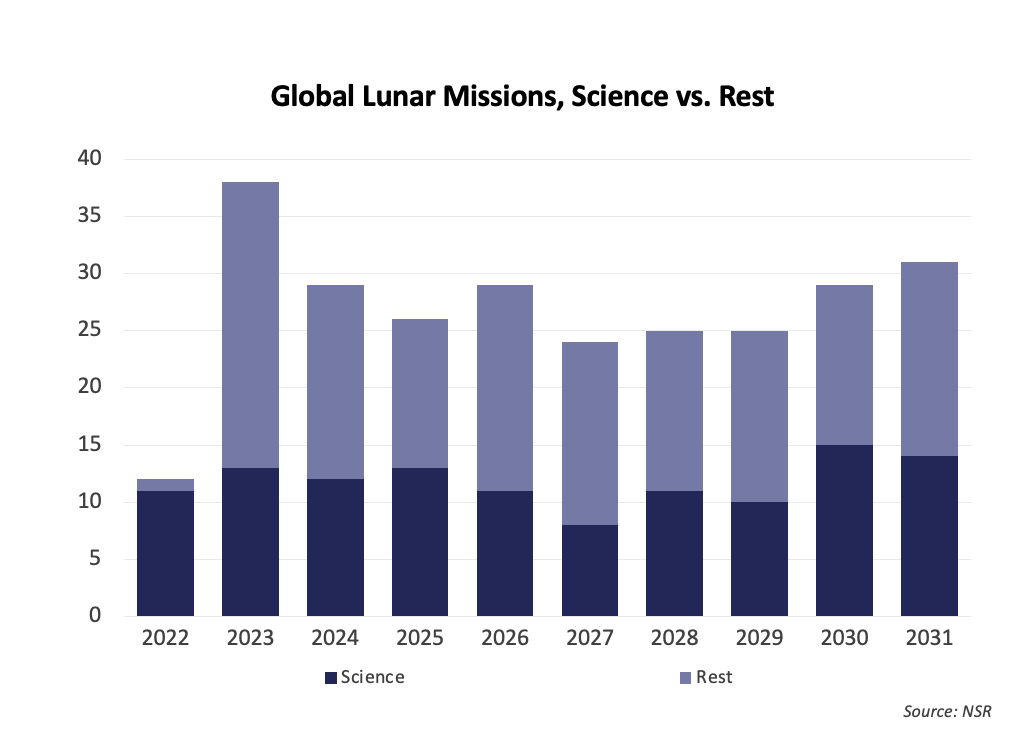The Moon ‘As-a-Service’ Business Model
Recently, NASA announced the 24th signatory of the Artemis Accords, and opened a new office to review and direct exploration activities coordinated with the future of Artemis roadmap. This growing interest presents a one-of-a-kind business opportunity for commercial companies to offer their products as a service to governments and agencies, and sparked a new collaborative effort between industries. This shift from owning to procurement of missions has introduced the “As-a-Service” business model to the lunar market. And it begs the question to be asked: Can commercial companies employ this timely, and cost-effective strategy to be part of the Lunar economy?

Paving the Yellow Brick Road
NSR’s Lunar Markets, 3rd Edition report forecasts that of the 400+ missions forecasted to launch, 32% are expected to be for science & technology development while another 35% are expected to require asset delivery services on the surface of the Moon.
NASA is keen to return to the Moon, and it has become noticeably clear that the future of human exploration does not just stop there, as it recently introduced the Moon-to-Mars architectures. The aim is to create an economic enterprise to foster industry growth & innovation, which has already begun starting with more offering single or multiple products such as CA for thermal shielding, Puli Space Tech for regolith processing, Venturi AstroLab for next-gen rover, Psionic for the navigation , Helios Space for oxygen production, WeSpace Technologies, Ltd for a lunar hopper, and recently funded OffWorld for ISRU exploration.

“As-a-Service” Business Model Building
While current lunar mission reports are grim with failures and delays, NASA is committed to supporting technologies and missions that meet the requirements of its proposed exploration architecture. To gain an advantage, there are three key indicators demonstrating sustainability for these missions:
- Financial – the ability to execute programs within realistic spending levels with effective management;
- Technical – the capability to perform operations at an acceptable level of risk, and the proper risk management of space exploration;
- Regulatory – the openness to adopt emerging policies and regulations for safe mission execution and a balanced approach to economic creation.
NASA is building on its successes within LEO, where the adoption and execution of “As-a-Service” has proven to be viable, giving businesses with stable and recurring revenue streams, increasing customer loyalty, and a capacity to scale their services swiftly in response to client needs. This can be replicated for signatories of the Artemis Accord, and the “As-a-Service” model is interesting where NASA, and Artemis signatories can be one of many customers for private industry making this cost effective.
First, by outsourcing specific services to specialist providers, it becomes easier to access breakthrough technology and expertise without making large upfront investments or shoulder the full risk of R&D. Services could range from payload hosting and integration to asset communication and data analysis, as well as more complicated possibilities such as lunar landing or deep-space mission management.
Second, the “As-a-Service” model could build a more collaborative and dynamic environment. Companies which adopt it can be enablers by publicizing their sustainability milestones, bringing diverse entities together, and facilitating collaboration amongst Accord signatories to maximize profit for all stakeholders.
Finally, the flexibility of the “As-a-Service” approach corresponds nicely with the growing needs and goals of space exploration.
The Bottom Line
NASA is aggressively addressing the shared interests of their global partners by achieving lunar science objectives through the CLPS program. A modified version of an “As-a-Service” business model will allow companies to deliver NASA and ARTEMIS accord payloads to a multitude of locations over multiple missions rather than a single trip. The adoption of this model has significant upsides to create a lunar enterprise, as it results in a much larger diversified customer base, international exposure, and flexibility for those adopting it.
The most efficient approach to accomplish this is to form alliances and develop collaboration with Accord signatories, and companies intending to supply services to Artemis Accord members should be aware that owing to a lack of precise preparation, inadequate risk assessment, cost management, or an inability to demonstrate a clear knowledge of the goals and objectives of the Artemis Accords could leave them behind in the race to the Moon.
